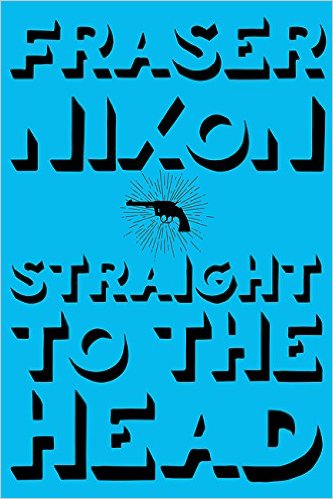
Review by Stefanie Bartlett
Straight to the Head
by Fraser Nixon
Arsenal Pulp Press, 2016
Fraser Nixon’s Straight to the Head is a neo-noir that follows a cast of stylish, offbeat characters into the dirty underbelly of 1980’s Vancouver, Canada. Eastern European immigrant Irina disappears with a shipment of drugs and $300,000, setting off a game of cat and mouse that involves corrupt police, Irina’s ex-husband, a hit man named Renard, and a twenty-something orphaned landlady named Dorothy Kwan.
If some of these elements don’t seem archetypal to the genre (Vancouver as a setting, a twenty-something orphaned landlady named Dorothy Kwan), it is because they aren’t. The book challenges genre throughout, and a story that could be read as a typical noir is subverted through Nixon’s characters, setting, and language. Dorothy, for instance, is no femme fatale. While she does play the role of a “bad girl,” repeatedly shoplifting luxury goods for resale, she resists such simple categorization in scenes where she questions the recent departure of her parents with genuine confusion and grief. Her vulnerability is only heightened when she is pulled into an underground labyrinth of crime and deceit after discovering her mysterious ex-tenant is Irina. Instead of retreating into self-pity at this overwhelming turn of events, Dorothy actively engages with the plot, investigating the disappearance of her parents and Irina. By the end of the book she comes out of her reserved shell as a clever, confident ingénue.
Vancouver is also an unusual setting for a noir, and the way Nixon treats it suggests he is as uncomfortable with the locale as I am. Instead of letting the city serve as a given backdrop, it is continually brought to attention by details that feel like research notes. In the first chapter Nixon delineates the feud between two Canadian department stores: “From her purse Dorothy unfolded a strong paper bag with rope handles from Eaton’s eternal competitor, kitty-corner across Georgia: the Hudson’s Bay Company.” (3) I am not sure whether knowing that Eaton’s was in competition with the Bay in 1980’s Vancouver is important. It certainly doesn’t do anything to colour my understanding of the story, of Dorothy, or of the tone of the city itself, but it does suggest a lack of confidence in the allure of the locale by compensating with superfluous facts. This occurs again a few pages later when Renard procures a gun: “He unlatched the case. It held a Beretta, three clips of ammunition, a short-barrelled .38 special with taped grip, and accompanying box of shells. ‘Not easy to find up here in Canada,’ remarked the gentleman.” (15) The gentleman’s remark does little but to remind me the story is set in Canada. I wanted Vancouver to be seamlessly woven into the story and taken as a given, but Nixon never sets it aside, launching into detailed descriptions of hotels and ethnic neighbourhoods and specific street names. I wouldn’t go so far as to say these overt details are a mark of bad writing as much as an insecurity surrounding the relevance of Canada as a setting, which I suppose is a malaise shared, in varying degrees, by most Canadian writers and artists.
Nixon’s language, too, is unusual. Some passages bite wonderfully with the rhythm and cadence of 1930’s hardboiled noir: “Trouble came calling halfway through the graveyard shift. Ted witnessed the two policemen appear at the glass door of the hotel lobby. It was just past three in the morning, the most brutal hour.” (6) Others are lyrical, with a lilting, elegiac sense of decay, more akin to a southern gothic than a noir: “From the kitchen window, Dorothy Kwan saw a crow picking at the carcass of a seagull in the lane. The backyard was overgrown with dandelions and alien-looking pigweed covered in strange blisters. If you let the pigweed’s milky sap touch your skin, it would burn and irritate you…. Tomatoes spoiled on the vine. A sagging garage slept in the heat. From the boughs of a crippled hawthorn hung torn red paper lanterns from a long–ago party.” (1) The sense of rot and disintegration is a fresh—and beautiful—perspective on the locale. If Nixon had lingered on details such as these, I may have been more receptive to his vision of the city.
Straight to the Head is a book with admirable aims, an interesting twist on genre, unexpected language, and a unique setting for a quasi-contemporary noir. While it may not live up to its goals, there is enough interest in the way of characters and language to make it a worthwhile read.
Stefanie is a recent graduate of the UBC Film Production Program. She currently works at Geist magazine in Vancouver. She ought to have more social media handles, but for now, she only has Instagram.